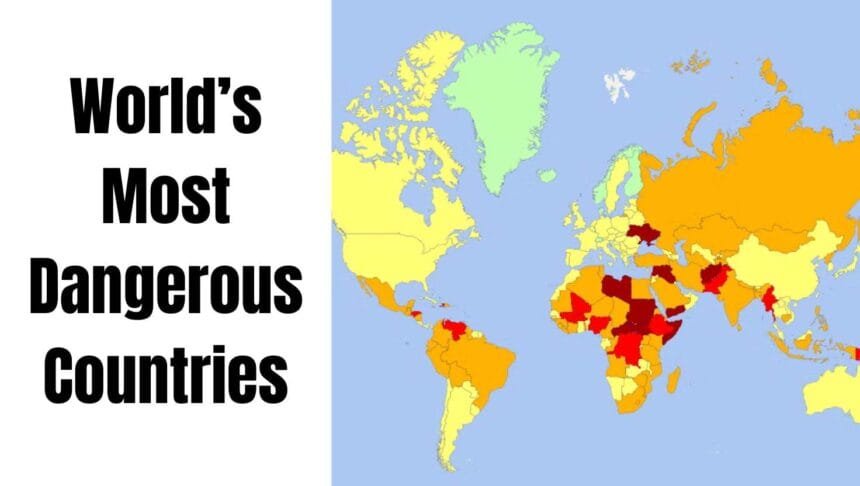In a world marked by geopolitical tensions, health crises, and climate change, assessing safety while traveling has become paramount.
A recent study by International SOS sheds light on the most dangerous countries to visit in 2025, analyzing security, health, and climate risks.
This risk map is not only a guide for travelers but also a resource for businesses navigating global operations.
The Most Dangerous Countries in 2025
According to the study, countries with extreme security risks include Somalia, Sudan, South Sudan, and the Central African Republic, among others.
These nations face ongoing conflicts, fragile governance, and a lack of basic infrastructure, making them highly unsafe for travel.
Other nations like Yemen, Libya, Iraq, Afghanistan, Syria, and Ukraine have also been flagged as extreme-risk zones, reflecting their instability due to prolonged wars or recent escalations.
Countries with a high but less severe risk include Mali, Ethiopia, Nigeria, Pakistan, and Venezuela, where travelers face challenges like civil unrest, terrorism, or limited access to healthcare.
Factors Behind the Ratings
The risk map evaluates nations across multiple dimensions:
- Security Risks: This includes the likelihood of conflicts, terrorism, and social unrest.
- Medical Risks: Factors such as the availability of healthcare facilities, medicine, and disease prevalence.
- Climate Change Impacts: The frequency and intensity of extreme weather events.
The ratings range from “low” to “very high” for medical risks and from “insignificant” to “extreme” for security risks.
The study highlights that geopolitical tensions have been a significant driver for risk escalation in 2024, with countries like Israel, Sudan, and Lebanon seeing expanded high-risk zones due to conflicts.
Rising and Falling Risks
While no country experienced a decrease in security risks in 2024, some medical risk ratings saw changes.
Libya, for instance, improved from “extreme” to “high,” signaling better access to healthcare.
Conversely, Bolivia moved from medium to high due to declining medical standards and increased disease prevalence.
Dr. Katherine O’Reilly, regional medical director at International SOS, emphasized the importance of data-driven tools for organizations to protect their workforce.
She pointed out that access to reliable healthcare and medicines significantly impacts a country’s medical risk rating.
The Role of Climate and Mental Health
Climate change remains an overlooked yet significant factor in the safety of nations. Countries experiencing frequent natural disasters or extreme weather events face heightened risks.
Mental health, too, has emerged as a concern. In the UK, for example, despite a generally low-risk rating, mental health issues affect 15-17.5% of the population, highlighting the need for holistic assessments.
Safer Alternatives
For those seeking secure travel destinations, countries like USA, Canada, Spain, France, and Vietnam offer low security and medical risks.
These nations provide robust infrastructure, stable governance, and access to quality healthcare, making them ideal choices for travel in 2025.



